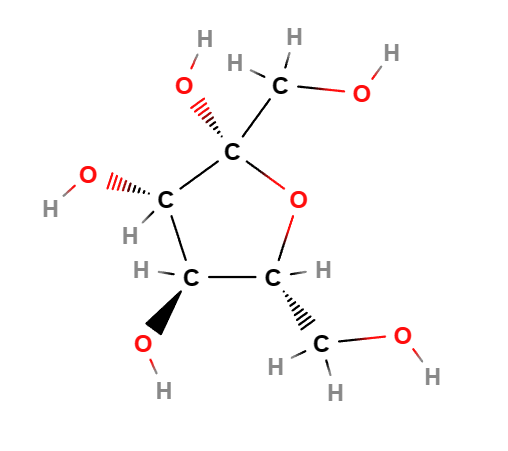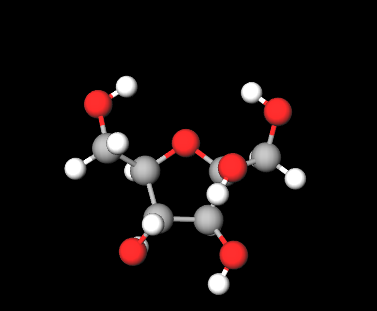| "Descrizione" by A_Partyns (12948 pt) | 2024-May-10 11:20 |
Fructooligosaccharides are natural carbohydrates made up of short chains of fructose molecules. They are oligosaccharides produced enzymatically from sugar beets, chicory, and sugar cane, mainly consisting of kestose, nystose, and fructosyl nystose. They are used as prebiotics in cosmetic formulations to support the skin's microbial flora.
Industrial Production Process
- Preparation of raw materials. Natural sugar-rich sources like chicory root or sugarcane are used. These are harvested and processed to isolate inulin or sucrose.
- Extraction of inulin. If starting from chicory root, inulin is extracted through a hot water leaching process and then filtered to remove solids and impurities.
- Enzymatic hydrolysis. The inulin or sucrose undergoes enzymatic hydrolysis with enzymes like inulinase or fructosyltransferase, which cleave the sugar bonds, producing FOS.
- Filtration. The mixture is filtered to remove proteins, enzymes, and other impurities, leaving a solution enriched in FOS.
- Concentration. The solution is concentrated through vacuum evaporation to reduce water content and increase the concentration of FOS.
- Crystallization and purification. The concentrated solution is cooled to crystallize the FOS. The crystals are collected and further purified through recrystallization.
- Quality control. The final product undergoes testing to verify its purity, compliance with standards, and functionality as a prebiotic.
What it is used for and where
Fructooligosaccharides are active ingredients used in cosmetic products for their ability to act as prebiotics, supporting the growth of beneficial bacteria on the skin. They promote a healthy skin microbiome, which helps strengthen the skin barrier and protect against external stressors. They are often used in creams, serums, and masks for their hydrating and balancing action.
Cosmetics - INCI Functions
- Humectant. Hygroscopic compound used to minimise water loss in the skin and to prevent it from drying out by facilitating faster and greater absorption of water into the stratum corneum of the epidermis. The epidermis is the most superficial of the three layers that make up human skin (epidermis, dermis and hypodermis) and is the layer that maintains hydration in all three layers. In turn, the epidermis is composed of five layers: horny, the most superficial, granular, spinous, shiny, and basal. Humectants have the ability to retain the water they attract from the air in the stratum corneum and have the function of moisturising the skin. They are best used before emollients, which are oil-based.
- Skin conditioning agent. It is the mainstay of topical skin treatment as it has the function of restoring, increasing or improving skin tolerance to external factors, including melanocyte tolerance. The most important function of the conditioning agent is to prevent skin dehydration, but the subject is rather complex and involves emollients and humectants that can be added in the formulation.
Cosmetic Applications
Moisturizing Properties. Fructooligosaccharides attract and retain moisture, improving skin hydration and softness.
Prebiotic Effects. They nourish the beneficial bacteria naturally present on the skin, supporting the balance of the skin microbiome and protecting against infections.
Soothing Effects. They reduce inflammation and soothe irritated skin, making them ideal for sensitive or inflamed skin.
Protective Effect. They create a barrier on the skin that protects against external agents, maintaining the integrity of the skin barrier.
Versatile Applications. They can be incorporated into various cosmetic products, such as serums, lotions, masks, and creams, for their prebiotic and moisturizing properties.
Other Applications
Food. Fructooligosaccharides are used as low-calorie sweeteners in beverages and foods, providing a healthy and prebiotic option (1).
Dietary Supplements. Used as prebiotics in dietary supplements to promote gut health and improve digestion (2).
Pharmaceutical Industry. Employed in medications and medical products for their beneficial effects on gut health and microbiome balance (3).
 |  |
Molecular Formula C6H12O6
Molecular Weight 180.16 g/mol
CAS 470-23-5
UNII B986VTP17J
DTXSID60859011
Synonyms:
beta-D-fructofuranose
Bibliografia_____________________________________________________________________
(1) Sabater-Molina M, Larqué E, Torrella F, Zamora S. Dietary fructooligosaccharides and potential benefits on health. J Physiol Biochem. 2009 Sep;65(3):315-28. doi: 10.1007/BF03180584. PMID: 20119826.
Abstract. Fructooligosaccharides (FOS) are oligosaccharides that occur naturally in plants such as onion, chicory, garlic, asparagus, banana, artichoke, among many others. They are composed of linear chains of fructose units, linked by beta (2-1) bonds. The number of fructose units ranges from 2 to 60 and often terminate in a glucose unit. Dietary FOS are not hydrolyzed by small intestinal glycosidases and reach the cecum structurally unchanged. There, they are metabolized by the intestinal microflora to form short-chain carboxylic acids, L -lactate, CO(2), hydrogen and other metabolites. FOS have a number of interesting properties, including a low sweetness intensity; they are also calorie free, non-cariogenic and are considered as soluble dietary fibre. Furthermore, FOS have important beneficial physiological effects such as low carcinogenicity, a prebiotic effect, improved mineral absorption and decreased levels of serum cholesterol, triacylglycerols and phospholipids. Currently FOS are increasingly included in food products and infant formulas due to their prebiotic effect stimulate the growth of nonpathogenic intestinal microflora. Their consumption increases fecal bolus and the frequency of depositions, while a dose of 4-15 g/day given to healthy subjects will reduce constipation, considered one of the growing problems of modern society, and newborns during the first months of life.
(2) Tokunaga T. Novel physiological function of fructooligosaccharides. Biofactors. 2004;21(1-4):89-94. doi: 10.1002/biof.552210117. PMID: 15630176.
Abstract. Two key properties of short chain fructooligosaccharides (sc-FOS) which lead to physiological functions are indigestibility in the small intestine and fermentability in the colon. Sc-FOS is converted into short chain fatty acids (SCFAs) by intestinal bacteria in the colon and absorbed. Through the metabolic pathway, sc-FOS improves gastrointestinal (GI) condition such as relief from constipation, formation of preferable intestinal microflora and intestinal immunomodulation those are known as prebiotics' function. Besides improvement of GI condition, dietary sc-FOS influences on calcium and magnesium absorption in the colon. A major mineral absorption site is the small intestine, but the colon also works as a Ca and Mg absorption site with an aid of SCFAs made from sc-FOS. Furthermore dietary sc-FOS influences on bioavailability of soy-isoflavones. Plasma and urinal concentration of Genistein and Daidzein, aglycones of Daidzin and Genistin, are higher in the rat fed with sc-FOS than the control rat. An additive effect of dietary isoflavone and sc-FOS was observed on the bone mineral density in OVX mice and moreover sc-FOS increased ceacal beta-glycosidase activity and equol production. These results suggest that FOS increase the bioavailability of isoflavones.
(3) Skrzydło-Radomańska B, Prozorow-Król B, Cichoż-Lach H, Majsiak E, Bierła JB, Kosikowski W, Szczerbiński M, Gantzel J, Cukrowska B. The Effectiveness of Synbiotic Preparation Containing Lactobacillus and Bifidobacterium Probiotic Strains and Short Chain Fructooligosaccharides in Patients with Diarrhea Predominant Irritable Bowel Syndrome-A Randomized Double-Blind, Placebo-Controlled Study. Nutrients. 2020 Jul 5;12(7):1999. doi: 10.3390/nu12071999.
Abstract. The purpose of the randomized double-blind placebo-controlled trial was to assess the effectiveness of synbiotic preparation containing probiotic Lactobacillus rhamnosus FloraActive™ 19070-2, Lactobacillus acidophilus DSMZ 32418, Bifidobacterium lactis DSMZ 32269, Bifidobacterium longum DSMZ 32946, Bifidobacterium bifidum DSMZ 32403 and fructooligosaccharides in adult patients with diarrhea-dominant IBS (IBS-D). The study included eighty patients with moderate and severe IBS-D who were randomized to receive synbiotics or placebo for eight weeks. Finally, a total of sixty-eight patients finished the study. The primary endpoints included the assessment of the symptoms' severity with IBS symptom severity scale (IBS-SSS), an improvement of IBS global symptoms with Global Improvement Scale (IBS-GIS) and adequate relief of symptoms after four and eight weeks of therapy. Secondary endpoints, which were collected by telephone interviewers three times a week included the assessment of individual IBS symptoms and adverse events. Synbiotic treatment in comparison to placebo significantly improved IBS-GIS (p = 0.043), and IBS-SSS score inducing a decrease in the total IBS-SSS (p = 0.042) and in domain-specific scores related to flatulence (p = 0.028) and bowel habit (p = 0.028) after four and eight weeks. Patients treated with synbiotics reported in weekly observations a significant amelioration in a feeling of incomplete bowel movements, flatulence, pain, stool pressure and diarrheal stools compared to those receiving placebo. There were no differences in adverse events between both groups. Concluding, the multi-strain synbiotic preparation was associated with a significant improvement in symptoms in IBS-D patients and was well-tolerated. These results suggest that the use of synbiotics offers a benefit for IBS-D patients. [Clinicaltrials.gov NCT04206410 registered 20 December 2019].
| Evaluate |

